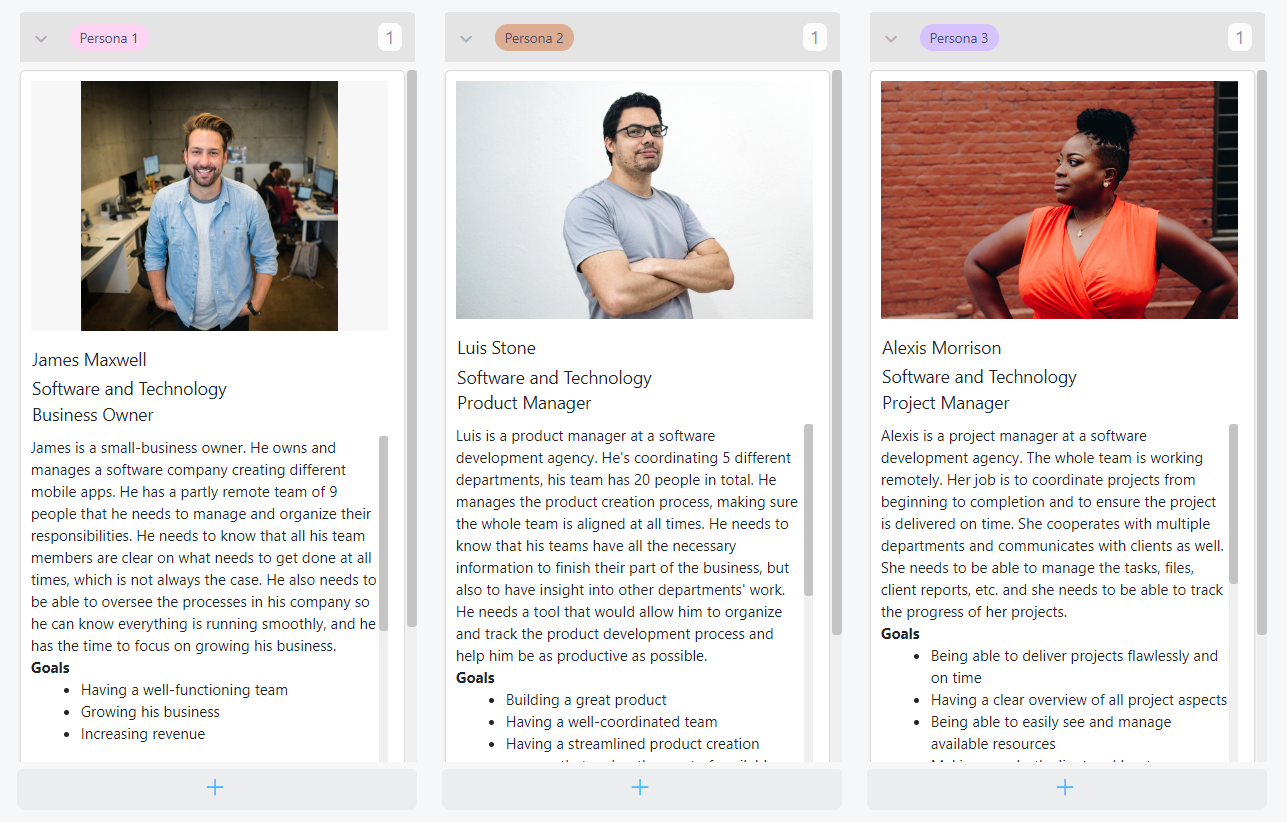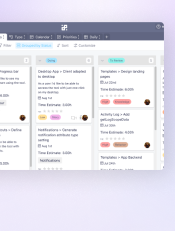How to Define Your Target Market and Customer Persona
Once you’ve created the product vision, you’ll need to determine who you’re creating this product for.
For this, you’ll have to define your target market and then go a step further to define your customer persona(s). So what is the difference between the two?
Defining Your Target Market
Defining your target market will give you the segment of people you’re targeting, according to their age, location, education, industry, interests, gender, and similar demographic information. Of course, you don’t have to note down all these details, only those that are relevant to your product.
Although narrowing down your audience may sound counterintuitive at first, it’s a crucial step. The fact of the matter is that you can’t sell to everyone, and if your marketing scope is too wide, you’ll only be wasting your resources.
Marketing to everyone is like shooting darts in the dark — you will probably run out of darts before you even hit the dartboard once.
Keep in mind that the target market and the target audience are two separate things. The target market are people who will be using your product, and the target audience are people you’re selling the product to.
Here’s an example: you’re making software that helps children learn to read. Your target market are children aged 5-8. But, since kids of that age rarely have money (or the desire) to invest in software, your target audience are their parents, grandparents, etc.
So, when making the product, you keep your target market in mind, but when selling the product, you sell it to the target audience. In most cases, these two are the same group of people or they greatly overlap, but sometimes they are completely different.
Creating Your Customer Persona
A customer persona (also known as a buyer persona) is the representation of your ideal customer based on market analysis and data collected from existing customers. Aside from demographics, a customer persona should give you information about your ideal customers such as their typical buying behavior, their lifestyle, needs, problems and challenges, goals, and motivations.

Once you define your customer persona (or personas), it will help you further develop your strategy when it comes to the product itself but also marketing and sales. You’ll be able to know where to find your ideal customers, how to speak their language, create the features they need, deliver the content they’re interested in, and even predict their common objections.
How to Create Customer Personas in Infinity
All stakeholders should be able to have a say in approving customer personas you have created, as this step will influence many future decisions. The easiest way to share customer personas with everyone is to create a product management board in Infinity. By using the Columns view, you can create a new column for each persona so that you have an overview of all personas at a glance. As you create a new persona, you can add all relevant information about them along with images that will help you visualize the personas you have created.
Here’s an example of Business Owner, Product Manager, and Project Manager personas created in Infinity:

You can easily create your customer persona(s) using the Infinity Product Management template.
- Step 1: Open the Customer Personas subfolder located in the Product Strategy folder.
- Step 2: Click the item you want to change and a modal will appear.
- Step 3: Write a brief description of your persona in the Description field.
- Step 4: Add a list of the persona’s goals. What does your ideal customer want to accomplish that your product can help them with? When it comes to a B2B company, the ultimate goal will always be to grow their business and increase revenue, but you should also add some goals specific to your product. If you have a B2C business, the situation is a bit different. For example, if your product is a workout app, your persona’s goal can be to lose weight or stay fit.
- Step 5: Add the persona’s challenges. What problems and challenges is your ideal customer facing daily that your product could solve? For Infinity, a typical challenge is “the team needs to use several tools, which causes confusion, delays, and misunderstanding”. Knowing your persona’s biggest challenges will help you build the best solution to these exact problems.
- Step 6: Add the persona’s buying motivation. What motivates this person to buy your specific product? Out of all other similar products on the market, what would be their biggest motivation to buy yours? For example: “they feel limited by the tools they are currently using”. Defining buying motivation will help you determine what sets your product apart from others on the market and identify its greatest value.
- Step 7: Add the persona’s buying concerns. What would be the main objection that could prevent this person from buying your product? Maybe the tool they’re currently using is free and yours isn’t, or they think that it would take too much effort to switch to your product if they’re already using something similar. By defining these objections you’ll be able to prepare counterarguments and solutions that would remove the persona’s buying concerns.
- Step 8: Add products similar to yours that your persona may already be using. This way, you will get a better idea of how your product should outshine and replace them in the eye of your ideal customer.
- Step 9: Add the persona’s industry to the Industry field.
- Step 10: Add their job to the Job field.
- Step 11: Remove the current image from the template and add one that represents your customer persona.
- Step 12: Repeat the process to add more customer personas.
Once you’ve defined your customer personas, this will be a strong foundation that will determine all your decisions. But, you should be ready to learn about your audience as you go and even adapt your target market and customer personas if you see the need for it in the future.
Unsure how to start? Preview or download the Product Management template and check out the examples of 3 customer personas we have created along with their goals, challenges, buying motivation, buying concerns, and tools they use. You can use these to build your customer personas off of.
How to Define a Product Vision to Guide Your Team


Product Management

Lifetime Discount Is Waiting
Enjoy 50% off the Unlimited White Label plan. All features, unlimited users, and full white label access — one fixed price for life.
Get the Special Offer






